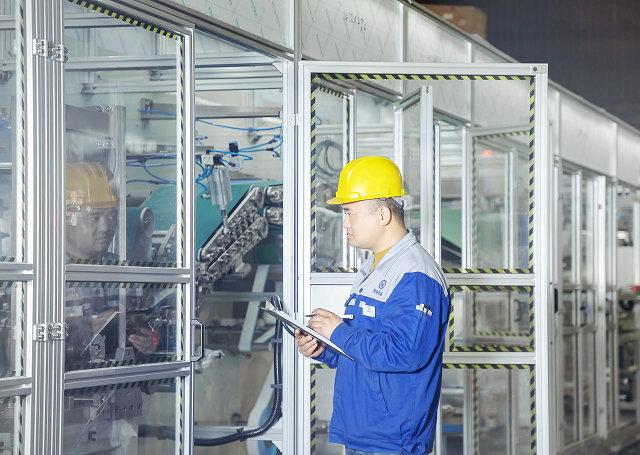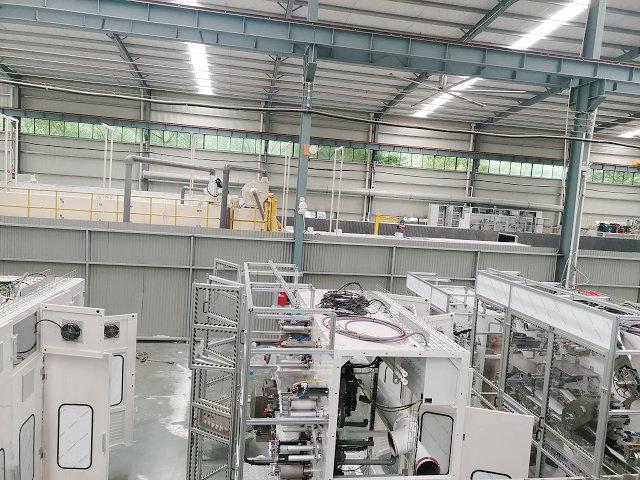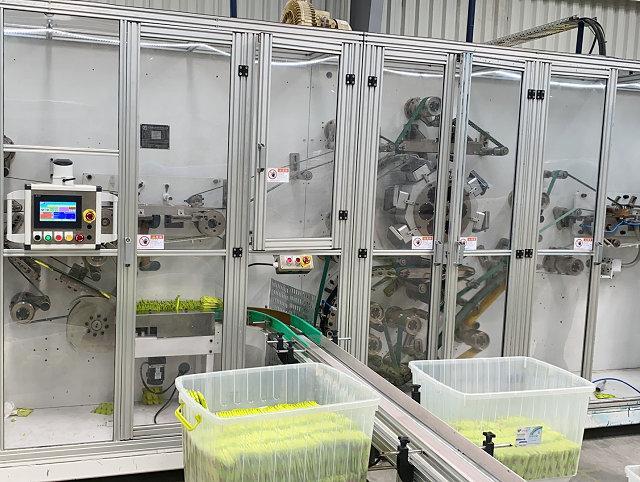Author:Haina Machinery Factory FROM:Diaper Machinery Manufacturer TIME:2023-07-25
Essential Product Knowledge for Infant Diaper Machine

The infant diaper industry is a significant sector of the hygiene products market. With the growing population and increased awareness about infant health and hygiene, the demand for high-quality diapers has surged. In response to this demand, manufacturers have developed advanced diaper machines that can produce diapers efficiently and effectively. This article provides essential product knowledge for infant diaper machines, outlining key features, production processes, and quality control measures.

Infant diaper machines are designed to automate the manufacturing process, ensuring consistent quality and high production rates. The key features of these machines include:
1. Absorbency and leakage prevention: Infant diaper machines are equipped with advanced mechanisms to create a highly absorbent core and provide leak protection. These features ensure that the baby remains dry and comfortable.
2. Elasticity and fit: Diapers should fit snugly around the baby's legs and waist. Modern diaper machines incorporate elastication systems that enable adjustable and comfortable fit, accommodating babies of different sizes.
3. Breathability: It is crucial for diapers to allow air circulation to prevent rashes and keep the baby's skin healthy. Diaper machines with breathable materials and designs promote ventilation and maintain optimal conditions.

The production of infant diapers involves several essential processes that ensure the quality and functionality of the final product:
1. Material preparation: The raw materials, including absorbent cores, non-woven fabrics, and fastening tapes, are prepared and fed into the machine's system.
2. Cutting and shaping: The raw materials are cut into specific shapes and sizes to form the diaper's main components, such as the absorbent core, backsheet, and leg cuffs.
3. Assembly: The components are assembled together using adhesive or ultrasonic welding techniques. This process creates a secure and durable bond between the layers of the diaper.
4. Elastication: Elastic bands are attached to the diaper's edges to provide a snug fit and prevent leakage. These bands are applied using specialized elastication systems integrated into the machine.
5. Inspection and packaging: Each diaper undergoes rigorous quality control checks, including measurements, visual inspection, and leakage tests. Once approved, the diapers are automatically packaged and prepared for distribution.
Ensuring the quality and safety of infant diapers is of utmost importance. Manufacturers employ various quality control measures during the production process:
1. Raw material testing: The raw materials used in diaper production undergo comprehensive testing to ensure they meet quality standards and regulatory requirements.
2. Inline inspections: Automated inspection systems are integrated into the diaper machines to detect any defects or inconsistencies during the manufacturing process. This allows for immediate adjustments and corrections.
3. Performance testing: Diapers are subjected to performance tests, such as absorbency capacity, leakage prevention, and breathability, to ensure they meet the desired standards.
4. Random sampling: Random samples from each production batch are collected and tested in a laboratory to verify the overall quality and compliance with quality standards.
By implementing these quality control measures, manufacturers can deliver high-quality infant diapers that meet the expectations of parents and caregivers.
Infant diaper machines play a crucial role in meeting the high demand for quality diapers in the market. Understanding the key features, production processes, and quality control measures associated with these machines is essential for manufacturers and industry professionals. By utilizing advanced technology and adhering to strict quality standards, the infant diaper industry can continue to provide safe, comfortable, and reliable diapers for babies worldwide.
